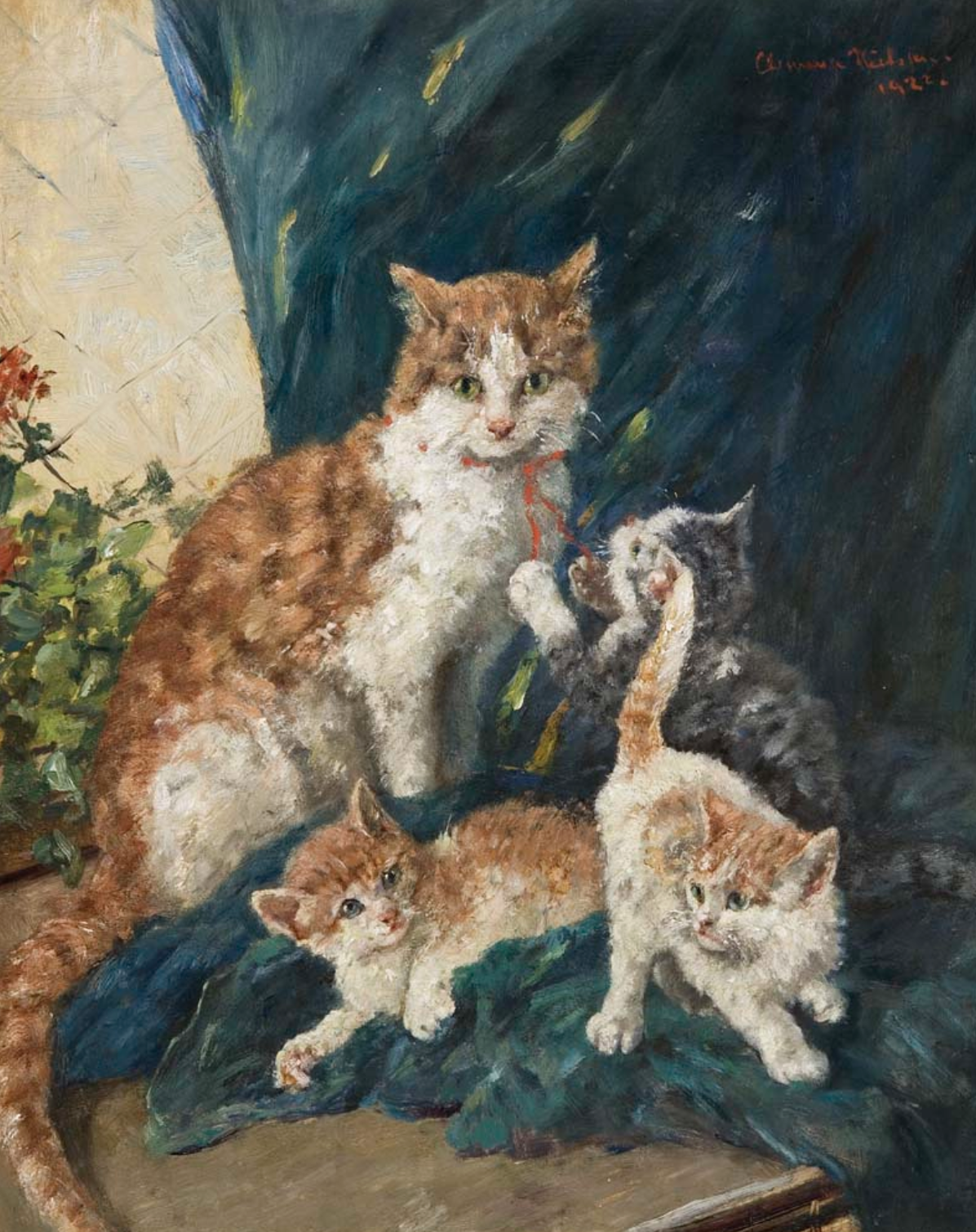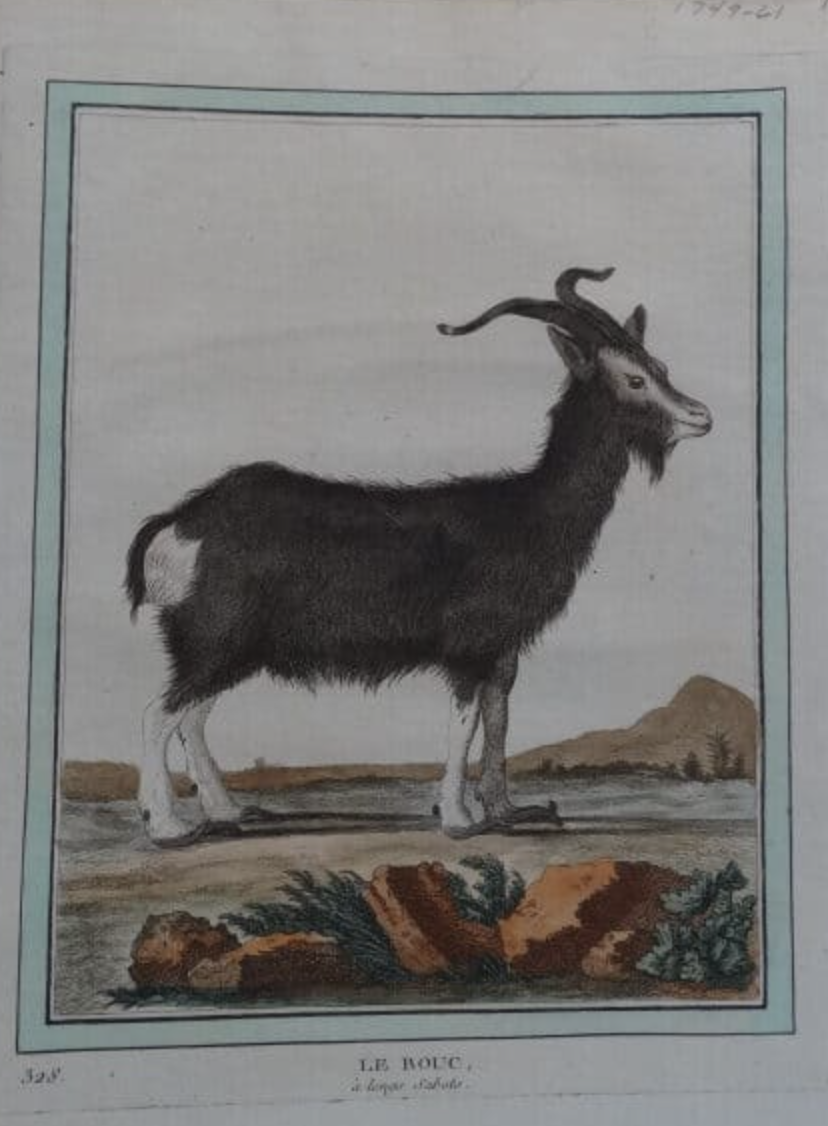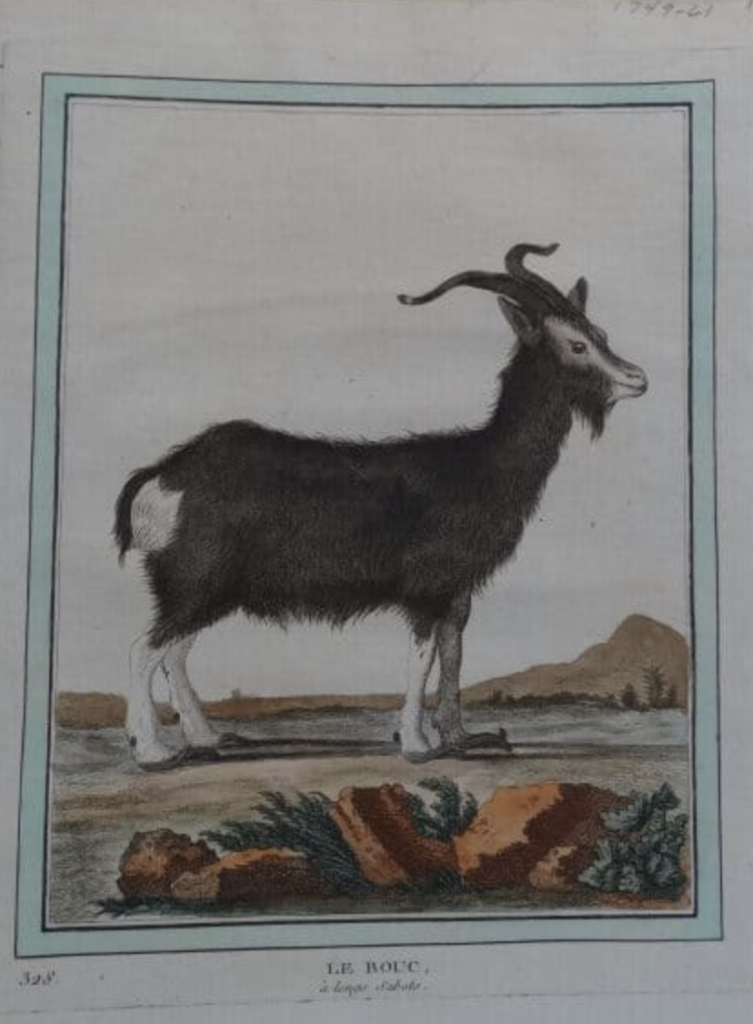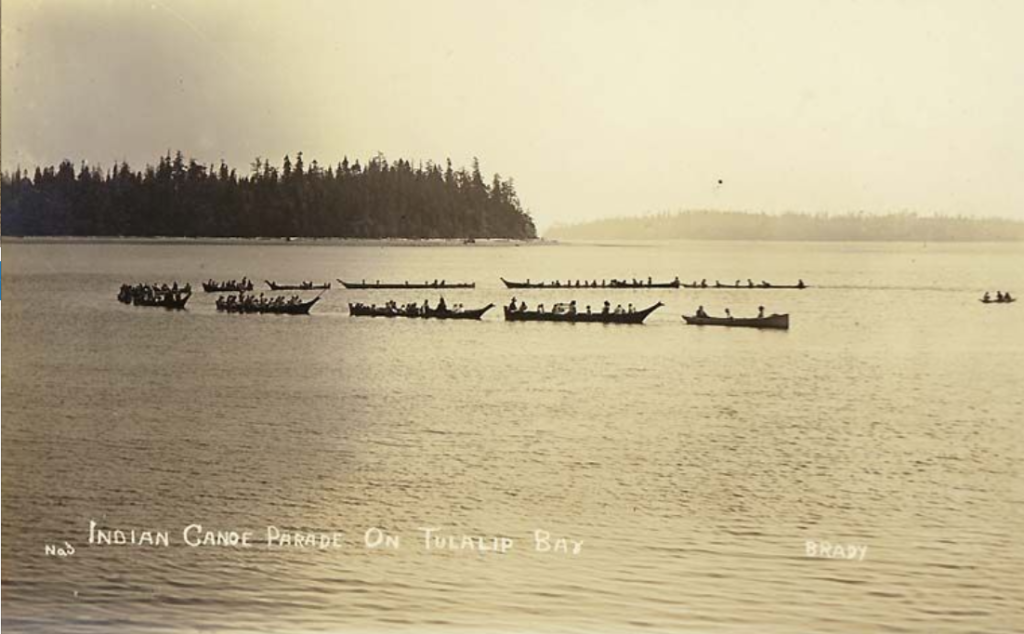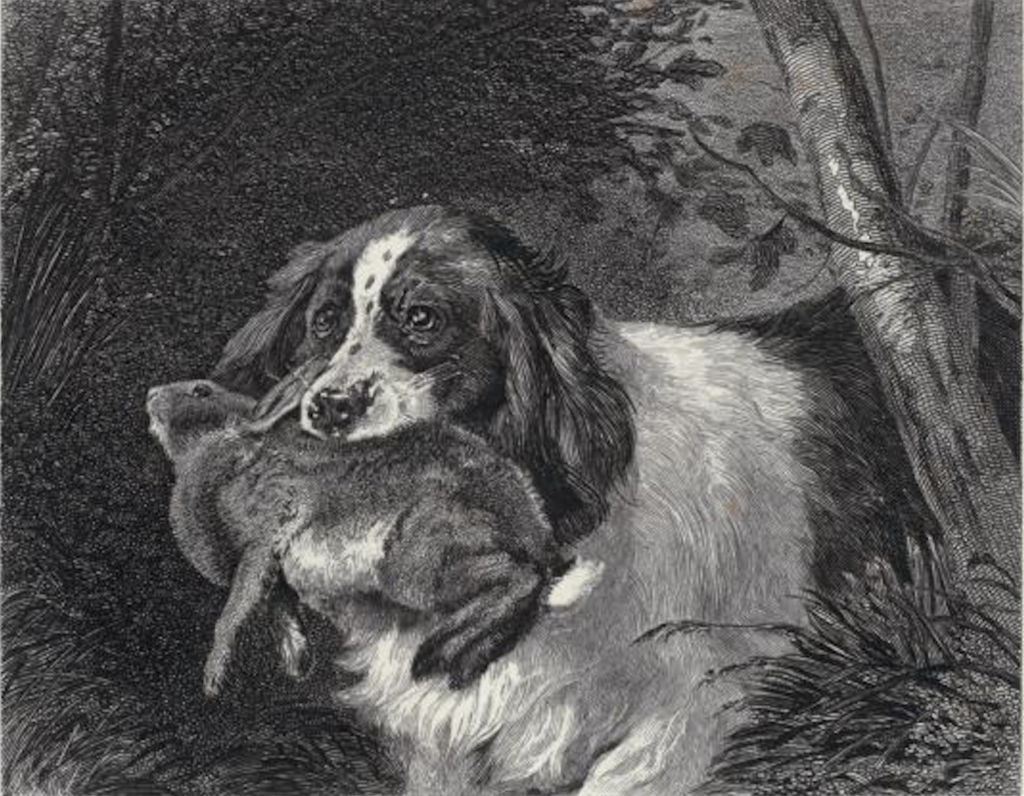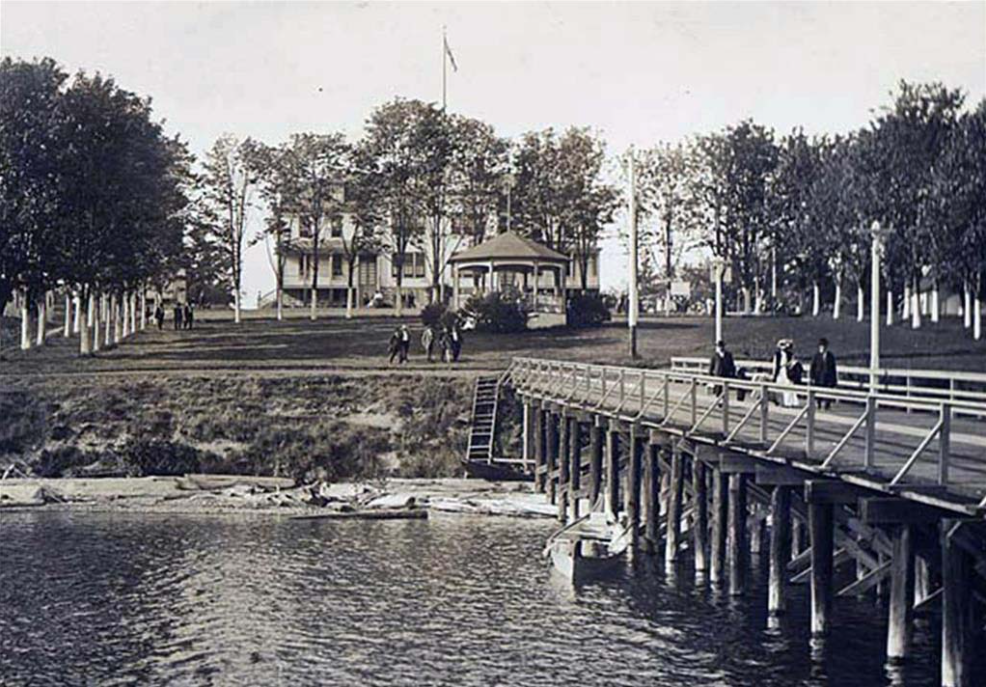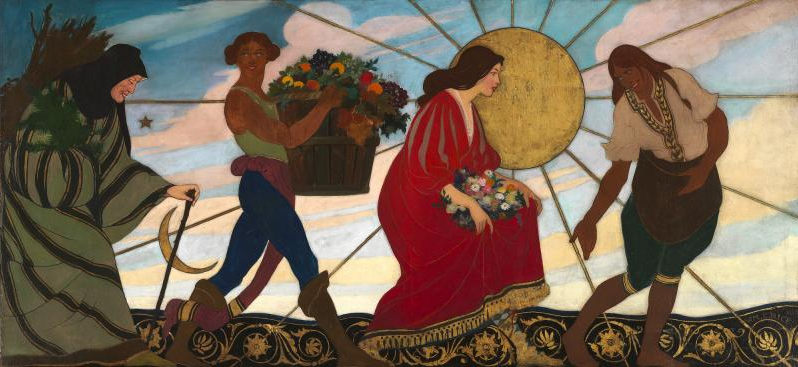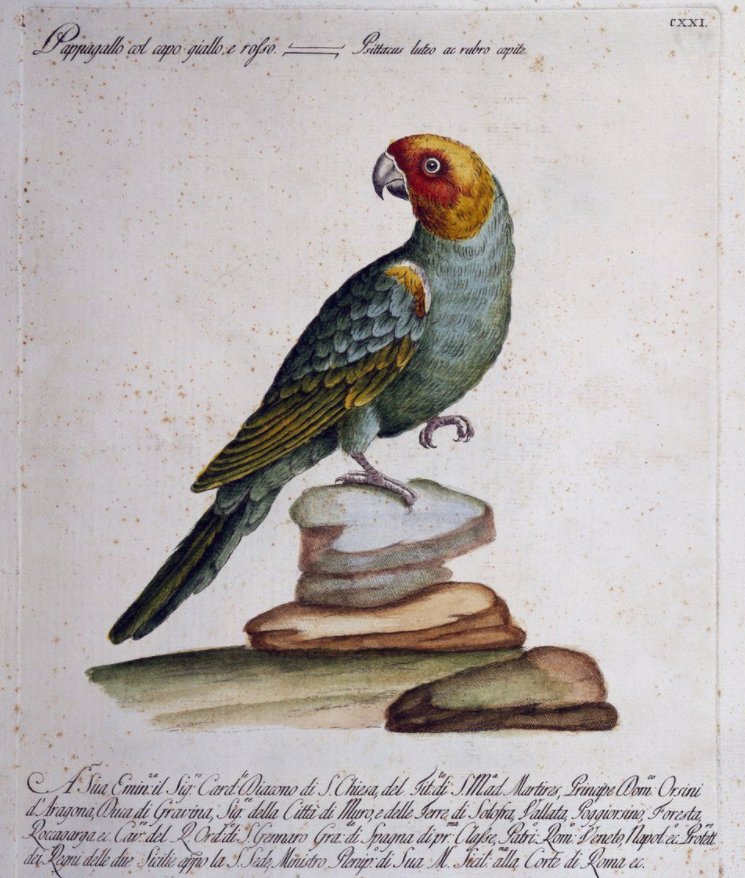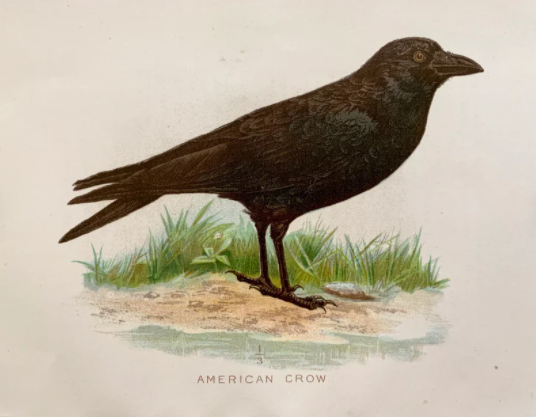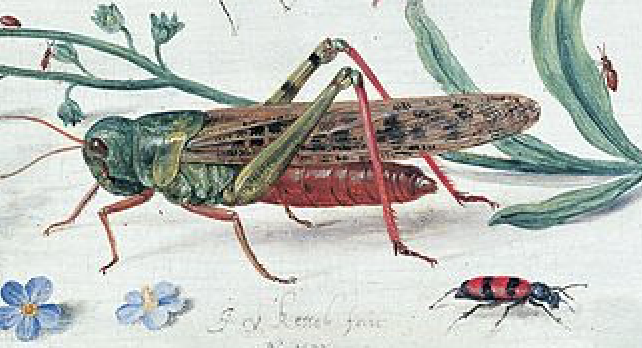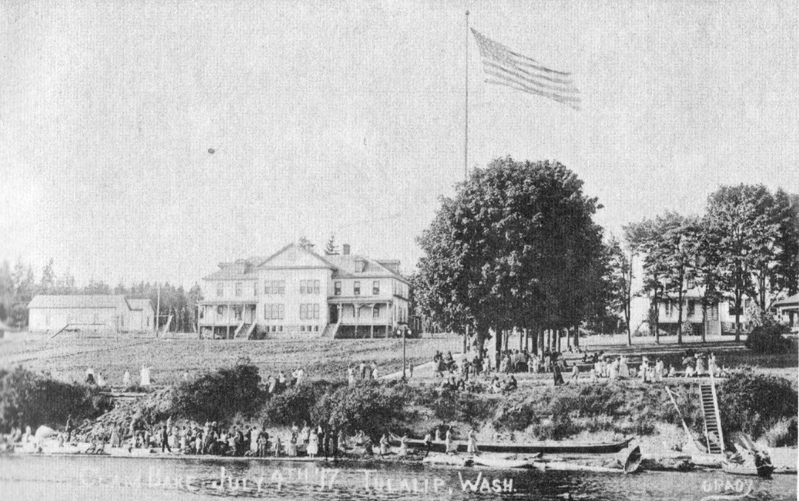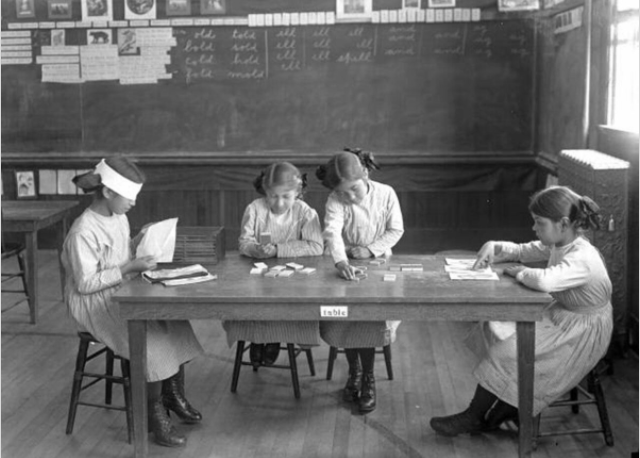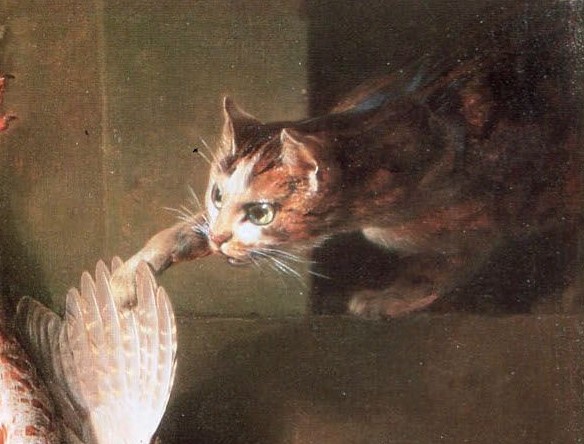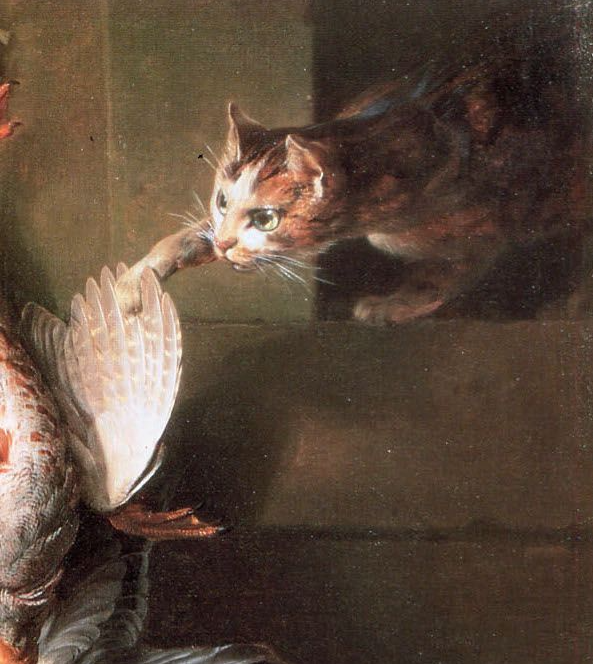The Kittens’ Lessons
By Anonymous
Annotations by Karen Kilcup
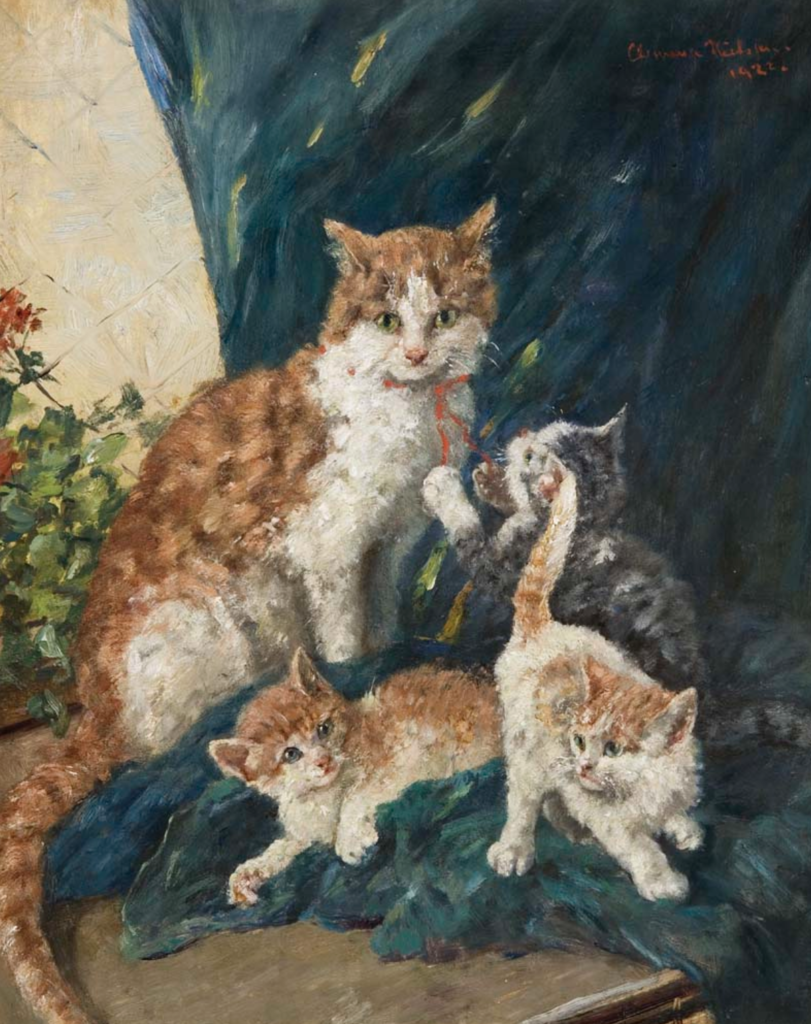
Public domain.
“Now children,” said puss as she shook her head, “It is time your morning lesson was said,” So her kittens drew near with footsteps slow, And sat down before her, all in a row. “Attention, class!” said the cat mamma, “And tell me quick where your noses are.” At this all the kittens sniffed the air As though it were filled with a perfume rare. “Now, what do you say when you want a drink?” The kittens waited a moment to think; And then the answer came clear and loud— You ought to have heard how the kittens meow’d! “Very well. ’Tis the same with a sharper tone, When you want a fish, or a bit of a bone. “Now what do you say when the children are good?” And the kittens purred as soft as they could. “And what do you do when the children are bad? When they tease and pull? Each kitten looked sad. “Pooh! said the mother, “that isn’t enough; You must use your claws when the children are rough.” “Now sptiss as hard as you can,” she said; But every kitten hung down its head. “Sptiss! I say,” cried the mother cat; But they said: “O mammy! we can’t do that.” “Then go and play,” said the fond mamma; “What sweet little idiots kittens are! Ah, well! I was once the same I suppose,” And she looked very wise and rubbed her nose.
Anonymous. “The Kittens’ Lessons.” The Youth’s Companion 16, no. 2 (September 1882): 104.
Contexts
Begun in 1881, The Youth’s Companion—a name that many nineteenth-century publications shared—was a monthly student magazine that published articles written by pupils of the Catholic-run boarding school located on the Tulalip Indian Reservation. A federally recognized tribe located in the mid-Puget Sound area, the Tulalip Tribes received reservation lands—22,000 acres—in 1855, with its legal boundaries established by President Ulysses S. Grant in 1873. According to the Tulalip Tribes website, “it was created to provide a permanent home for the Snohomish, Snoqualmie, Skagit, Suiattle, Samish, and Stillaguamish Tribes and allied bands living in the region.”
Nineteenth-century Indian boarding schools aimed to assimilate Native Americans into white culture. They separated children from their families, required students to dress like white Americans, and prohibited them from speaking their language. They also emphasized so-called “industrial” training: boys learned agricultural and industrial skills, while girls learned how to cook, sew, and clean a household. Students were often expected to become servants or to provide manual labor help for whites.
Like many contributions to Native American student periodicals, this poem was published anonymously. Students living on reservations during this time often received educations governed by white religious authorities who emphasized moral training. The poem provides some basic natural history lessons about cats. It may also offer advice to students that as they get older, they should reject ill treatment by others.
Resources for Further Study
- Kalliber, Kim, “Seattle Continues Healing ‘Deep Wounds’ With Boarding School Resolution,” Tulalip News, October 20, 2015.
- King, Marsha. “Tribes confront painful legacy of Indian boarding schools,” Seattle Times,February 3, 2008.
- Marr, Carolyn J. “Assimilation Through Education: Indian Boarding Schools in the Pacific Northwest,” University of Washington Libraries Digital Collection. This article includes historical contexts and features “A Typical Daily Schedule.”
- ———. “Between Two Worlds: Experiences at the Tulalip Indian Boarding School, 1905-1932,” Hibulb Cultural Center & Natural History Preserve.
Contemporary Connections
“Tulalip History Minute 04—The Tulalip Indian School presented by Mary Jane Topash,” the Tulalip History Project. Provides Tulalip-sponsored background on the tribe.
“Editorial: Getting to the truth of Tulalip boarding school,” September 26, 2021, HeraldNet (Everett, Washington). Caution: includes information about abuses at the school.
